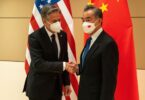Production and sales of major jobs providing automobile sector has been on the downward trajectory almost over the past one year. Unaffordable finance cost because of high interest rate, and sky-high prices of utilities, regressive taxation and rising import cost of completely knock-down and semi knock-down major auto components due to currency depreciation are the major factors that caused downturn in this one of the leading contributory sector to growth of the economy. Now the coronavirus outbreak has given it another big blow, pushing it almost to the verge of collapse.
Complying with the directives of the government about containing the spread of virus, majority of automobile manufacturing and assembling plant have shut down their production lines since March 23. There are no bold indications that production and sales of the industry will resume shortly. The plants of automobile companies that have stopped production include Indus Motors, Toyota, Honda Altas Cars, Yamah, Pak Suzuki Motors Company, Dysin Automobiles, Hino-Pak Motors and Millat Tractors. According to Pak-Suzuki Motors’ Spokesperson Shafiq Ahmad Sheikh, plants closures will give huge blow to automobile industry. It merits mention that during the past 8 months of the current fiscal year sales of cars has shown 44 percent decrease to 90,834 units as compared with the sale of 162,240 units during the same period in previous fiscal year. Moreover, the sale of trucks, jeeps and tractors has also gone down.
As part and parcel of large scale manufacturing, automobile industry provides 1 million jobs directly and indirectly. The vendors’ machine shops that manufacture small auto parts have already fired 45,000 daily wage workers. If the shutdown in automobile manufacturing and assembling plants prolongs then employment of regular employees may also be at risk. Further lowering of interest rate by 150 basis points and deferred payment of principle amount and mark-up on already acquired loans under the Prime Ministers incentive package may not help accelerate production activity in automobile sector when its plants becomes operational after the termination of lockdown period. The incentive may largely benefit small and medium scale enterprise and the risk of layoff of regular workers will remain in large scale manfacturing. Hence, the demand of automobile industry for the grant of fiscal incentives such as total elimination of turn over tax and 75 percent reduction in withholding tax seems justified. As national currency is again losing value against the US dollar and other major currencies of international trade, plea of 10 percent reduction in import duty on completely knock-down automobile units is worth consideration.
Under the incentive package of Rs.1.2 trillion, Rs. 100 billion have allocated for small and medium scale enterprise and agriculture sector. It remains to be seen how this apparently attractive looking incentive helps production activity going in these sectors.
It is matter of satisfaction that under the Prime Minister’s incentive package, Rs.200 billion has been earmarked for the employment protection of workers employed in the industrial sector. A transparent mechanism has to be put in place that the funds allocated for this purpose actually reach the pockets of workers. Disbursement of salaries to industrial workers must be through their bank accounts rather than on the salary sheets maintained by the accounts section of industries. If finances released for the protection of employment workers is left to the discretion of industrialists then misappropriation of funds cannot be ruled out. The workers employed in the informal sector also need assistance from the government and must not be left out of the incentive package. It would need expansion of the social protection cover under Benazir Income Support Programme.






